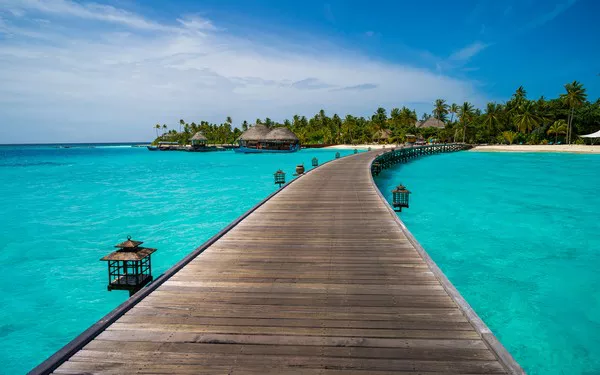Altitude is a defining feature of a country’s geography, influencing its climate, ecosystems, and even its culture. While some nations are known for their towering mountain ranges and high plateaus, others lie at or near sea level, with landscapes shaped by rivers, deltas, and coastal plains. In this article, we delve into the five lowest altitude countries in the world, exploring their unique geographical features, cultural heritage, and environmental significance.
5 Lowest Altitude Countries in the World
1. Maldives
Geographical Overview
Situated in the Indian Ocean southwest of Sri Lanka and India, the Maldives is the lowest country in the world, with an average elevation of just 1.5 meters above sea level. Comprising 26 atolls and over 1,000 coral islands, the Maldives is renowned for its stunning natural beauty, with turquoise lagoons, white sandy beaches, and vibrant coral reefs. The highest point in the Maldives is just 2.4 meters above sea level, making it particularly vulnerable to rising sea levels and climate change.
Cultural Heritage
The Maldives has a rich cultural heritage that reflects its history as a crossroads of trade and commerce in the Indian Ocean. Influenced by Arab, African, and South Asian cultures, Maldivian cuisine, music, and dance are a unique blend of traditions from across the region. The country is also known for its traditional craftsmanship, including intricate woodcarving, lacquer work, and mat weaving.
Environmental Significance
As one of the world’s most low-lying countries, the Maldives is particularly vulnerable to the impacts of climate change, including sea-level rise, coastal erosion, and extreme weather events. The government has taken proactive measures to mitigate these risks, including investing in renewable energy, coastal protection, and sustainable tourism practices. However, the future of the Maldives remains uncertain, as rising sea levels threaten to submerge much of the country’s landmass in the coming decades.
2. Tuvalu
Geographical Overview
Located in the Pacific Ocean between Australia and Hawaii, Tuvalu is the second-lowest country in the world, with an average elevation of just 2 meters above sea level. Comprising nine small islands and atolls, Tuvalu is characterized by its pristine beaches, coral reefs, and lush tropical vegetation. The highest point in Tuvalu is just 5 meters above sea level, making it highly vulnerable to sea-level rise and storm surges.
Cultural Heritage
Tuvalu has a rich cultural heritage that reflects its Polynesian roots and maritime history. Traditional practices such as fishing, canoe building, and storytelling are central to Tuvaluan culture, while music and dance play a significant role in community celebrations and ceremonies. The country is also known for its unique handicrafts, including woven mats, baskets, and carvings made from local materials.
Environmental Significance
Like the Maldives, Tuvalu is highly vulnerable to the impacts of climate change, including sea-level rise, coastal erosion, and saltwater intrusion. The government has implemented various adaptation measures, including building seawalls, planting mangroves, and relocating communities to higher ground. However, the future of Tuvalu remains uncertain, as rising sea levels threaten to inundate much of the country’s land area in the coming decades.
3. Marshall Islands
Geographical Overview
Located in the Pacific Ocean between Hawaii and the Philippines, the Marshall Islands is the third-lowest country in the world, with an average elevation of just 2 meters above sea level. Comprising 29 atolls and over 1,000 small islands, the Marshall Islands is known for its stunning natural beauty, with pristine beaches, crystal-clear lagoons, and diverse marine life. The highest point in the Marshall Islands is just 10 meters above sea level, making it highly vulnerable to sea-level rise and extreme weather events.
Cultural Heritage
The Marshall Islands has a rich cultural heritage that reflects its Micronesian roots and seafaring tradition. Traditional practices such as canoe building, navigation, and storytelling are central to Marshallese culture, while music and dance play a significant role in community life. The country is also known for its unique handicrafts, including woven mats, baskets, and shell jewelry made from local materials.
Environmental Significance
Like Tuvalu and the Maldives, the Marshall Islands is highly vulnerable to the impacts of climate change, including sea-level rise, coastal erosion, and saltwater intrusion. The government has implemented various adaptation measures, including building seawalls, planting mangroves, and promoting sustainable fishing practices. However, the future of the Marshall Islands remains uncertain, as rising sea levels threaten to submerge much of the country’s land area in the coming decades.
4. Netherlands
Geographical Overview
Despite being known for its picturesque windmills, tulip fields, and canals, the Netherlands is one of the lowest countries in the world, with much of its land lying below sea level. The country’s average elevation is just 30 meters above sea level, making it vulnerable to flooding from rivers and coastal storms. The Dutch have long relied on a sophisticated system of dikes, levees, and pumps to reclaim land from the sea and protect against flooding.
Cultural Heritage
The Netherlands has a rich cultural heritage that reflects its history as a maritime power and trading nation. Dutch art, architecture, and literature have made significant contributions to world culture, with iconic figures such as Rembrandt, Van Gogh, and Anne Frank leaving an indelible mark on the world stage. The country is also known for its progressive social policies, including legalizing same-sex marriage, decriminalizing marijuana, and promoting sustainable development.
Environmental Significance
Despite its innovative approach to water management, the Netherlands faces numerous environmental challenges, including subsidence, pollution, and habitat loss. The government has implemented various measures to address these issues, including investing in renewable energy, improving water quality, and restoring natural habitats. However, the future of the Netherlands remains uncertain, as rising sea levels and changing weather patterns pose significant risks to the country’s long-term sustainability.
5. Bangladesh
Geographical Overview
Located in South Asia, Bangladesh is one of the lowest countries in the world, with much of its land lying in the Ganges-Brahmaputra Delta. The country’s average elevation is just 8 meters above sea level, making it highly vulnerable to flooding from rivers and coastal storms. Despite its low elevation, Bangladesh is one of the most densely populated countries in the world, with over 160 million people living in its coastal regions.
Cultural Heritage
Bangladesh has a rich cultural heritage that reflects its history as a crossroads of trade and commerce in the Indian subcontinent. Influenced by Hindu, Buddhist, and Islamic traditions, Bangladeshi cuisine, music, and dance are a vibrant blend of flavors and styles. The country is also known for its traditional handicrafts, including pottery, weaving, and embroidery, which are often passed down through generations.
Environmental Significance
Bangladesh faces numerous environmental challenges, including flooding, cyclones, and soil erosion, exacerbated by climate change and deforestation. The government has implemented various measures to address these issues, including building flood embankments, planting mangroves, and promoting sustainable agriculture. However, the future of Bangladesh remains uncertain, as rising sea levels and changing weather patterns threaten to displace millions of people and disrupt the country’s economy and food security.
Conclusion
Despite their low elevation, the five lowest altitude countries in the world are home to diverse cultures, rich histories, and stunning natural landscapes. However, they also face significant environmental challenges, including sea-level rise, flooding, and habitat loss, exacerbated by climate change and human activities. As the global community grapples with these issues, it is essential to support and implement measures to mitigate their impacts and ensure the long-term sustainability of these vulnerable nations. Only through concerted international cooperation and sustainable development can we protect the unique heritage and natural beauty of these low-lying countries for future generations.
You Might Be Interested In:

























